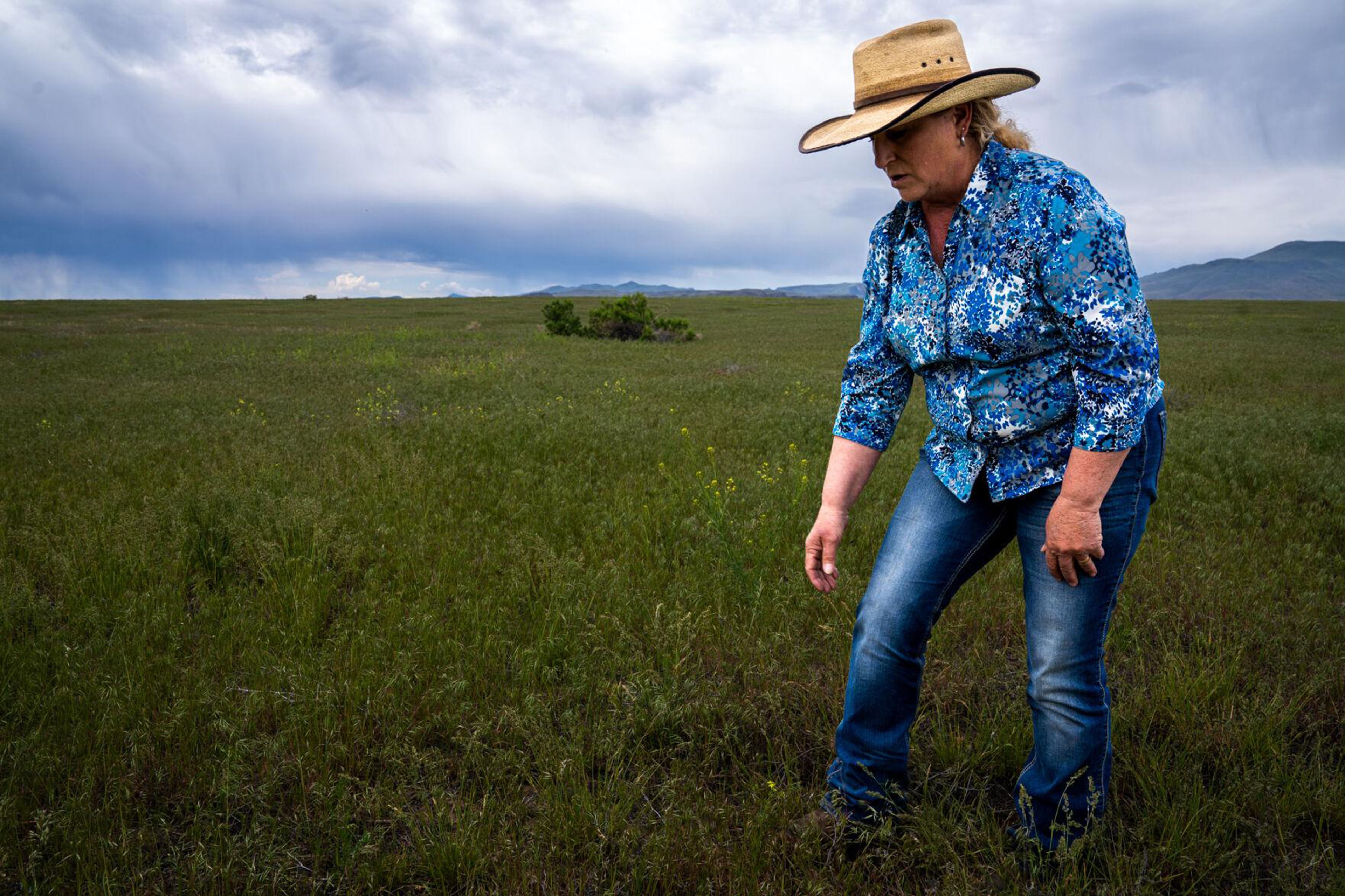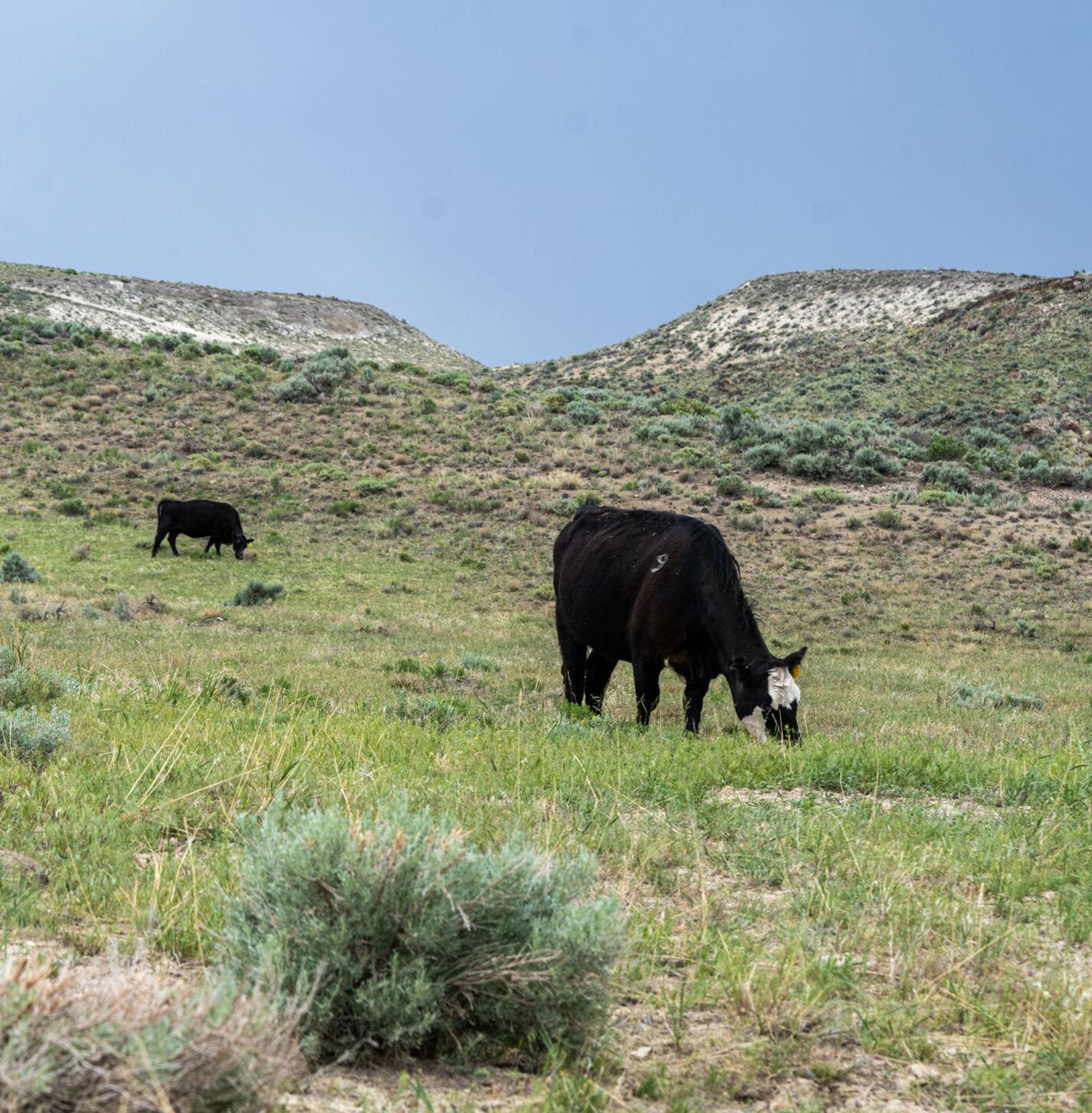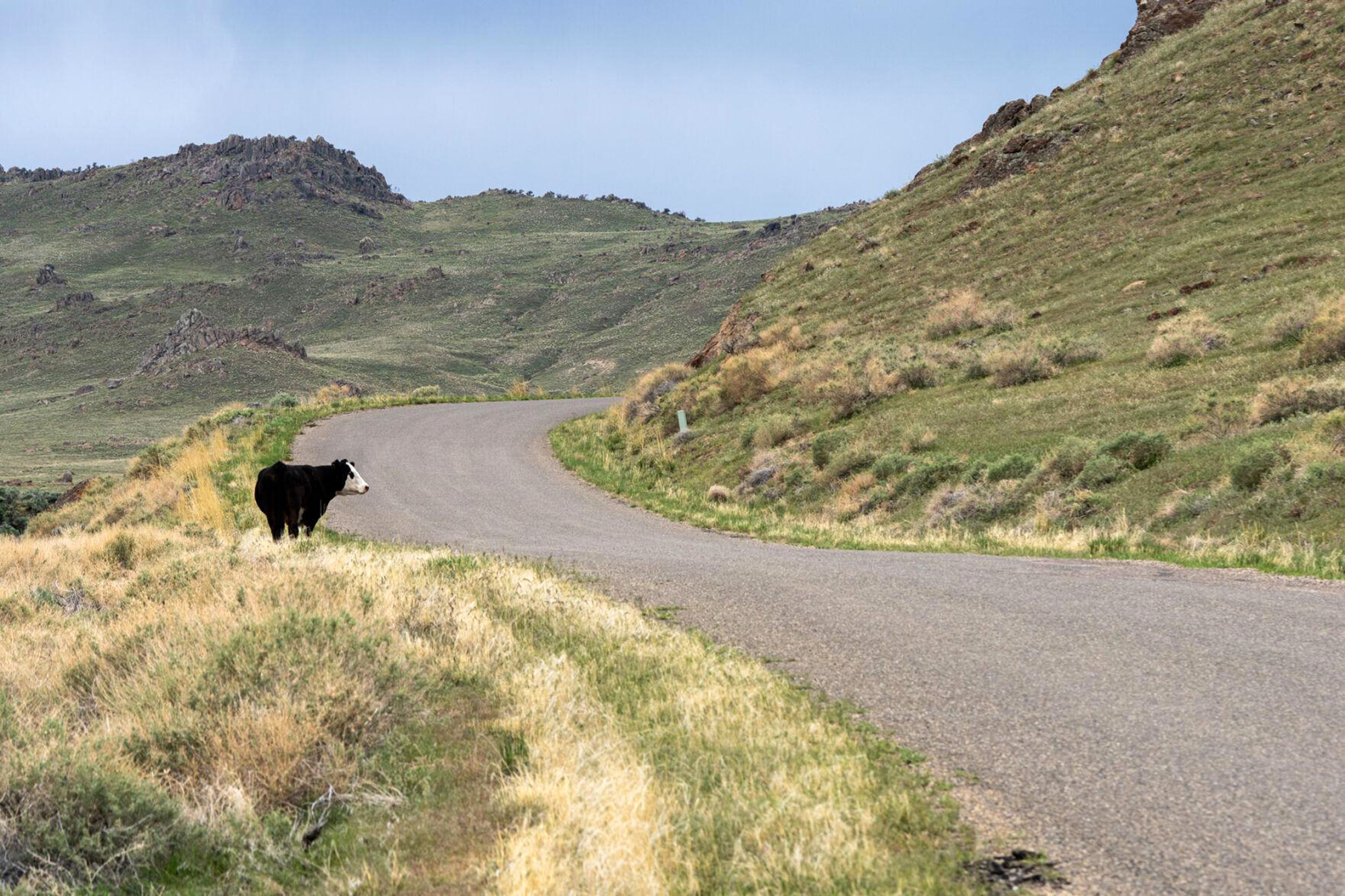FARM & RANCH: Graze to reduce the blaze
Ranching and cattle grazing efforts now reduce wildfire fuels for the summer in Idaho
The herd of black and brown cows and their calves idly grazing just off the road in the Owyhee Front are unfortunately completely unaware of the important purpose they’re serving.
This spring, the cheatgrass in the rangeland is tall and green and full of nutrition for the ranging cattle. When the invasive species is allowed to keep growing long and tall, it eventually dries out during the hot months and becomes extremely flammable.
Livestock grazing on public lands is one tool state and federal land managers are using to reduce wildfire fuels. This doesn’t prevent fires from happening, but will hopefully help slow them down or keep them from growing out of control.
“Livestock play an important role in helping us reduce fine fuel loading out there on our rangelands,” Idaho Department of Lands Director Dustin Miller said. “Proper grazing is a good thing on rangelands. It helps stimulate the production of natural bunch grass communities, helps reduce fuel loading and decrease the risk of catastrophic fire and it’s beneficial for wildlife that utilize the range as well.”
The department is involved in improving habitat conditions for greater sage grouse recovery efforts, which also improves forage potential for livestock grazing, he said. For example, the department is using grants to remove juniper trees that have encroached on areas they hadn’t grown in before. This opens up the canopy and stimulates growth of native sagebrush and bunch grasses — this is beneficial to wildlife and livestock.
With the heavy precipitation at the beginning of spring in Idaho, the range could see a lot of what’s known as fine fuels; these are fast-drying foliage, such as grasses and twigs. They typically cover a lot of surface area, ignite readily and are rapidly consumed by fire, according to the U.S. Department of Agriculture.
Ranchers who get permits to graze on public land are held to strict standards, including grazing plans for each individual allotment that regulate timing, how many animals the land can support, and requirements to maintain fencing and protect riparian areas.
Targeted grazing
In the case of the Owyhee Front, a large fire in 2015 has led to an experiment in using grazing to prevent another fire from becoming so destructive. After the Soda Fire, a pilot project was launched by the Bureau of Land Management in the region to create fire breaks on the landscape, which would serve to slow down a fire and provide a safer area for firefighters to work from.
Some of the fire breaks are mowed; 200 meters on either side of the road is trimmed down to help slow down a fire. And some of the fire breaks are grazed, with targeted heavier grazing by the ranchers who lease in the area.
These efforts in the lowlands will also hopefully protect the uplands in the area, which is where more wildlife such as the sage grouse reside, said rancher Brenda Richards, Idaho Rangeland Conservation Partnership coordinator.
In 2018, the BLM began implementing the targeted grazing project in which ranchers graze livestock along 36 miles of Owyhee Front roadways from around Marsing to Murphy.
“We’ve made important gains in rehabilitating the area burned in the Soda Fire with the help of many partners,” BLM Boise District Manager Lara Douglas said in a 2018 release. “Targeted grazing allows us to experiment with a new tool to protect those gains, while at the same time supporting traditional land uses.”
Targeted grazing has been used in other Great Basin locations, such as Frenchglen, Ore., and Elko, Nev. U.S. Department of Agriculture rangeland scientist Pat Clark said on the USDA website this method can be implemented at a lower cost than mechanical methods.
The cows are kept in the targeted area until they graze down the grass to what’s known as “stubble height,” which is about 2 to 3 inches.
The fuel break system in Elko has shown to be effective in three different wildfires: in each case, it was reported the fire burned quickly through the cheatgrass until it slowed at the fuel break, which allowed firefighters to contain it and protect sage grouse habitat, according to the USDA.
Richards’ cattle were grazing in the area of the Soda Fire at the time and had to be moved three separate times throughout it as the wind kept changing the direction of the flames. Some of her cows had lung damage, but she was lucky enough not to lose any.
She said going through the burn area to retrieve her cattle, she realized the significant impact it had on wildlife. It burned so hot and fast that deer, coyotes and other wildlife in the area suffered lung damage and died without getting burned.
“It’s just a horrible thing,” Richards said. “... It looks like something out of a movie.”
Targeted grazing has a lot of potential for wildfire mitigation in certain areas, but the way it’s currently managed does have some limitations.
The Owyhee Front is high desert at a low elevation, so the grasses can dry out pretty quickly. Ranchers will sometimes have to haul water out for their cattle to be able to do targeted grazing, Richards said.
The ranchers also don’t have flexible dates on their permits for when their cattle can be turned out on their typical grazing allotment, she said, and the weather doesn’t always cooperate with those dates.
Last year, only one permit holder was able to do targeted grazing, Richards said.
“Mother nature predicts everything, and that’s where it gets a little bit tricky for the producers, the operators,” Richards said.
She highlighted an area that had previously been grazed down about two weeks prior, but the ranchers since moved onto their permitted allotments so as not to lose out on them. After they left the area, a warm spell and some rain spurred a second growth of the cheatgrass. Without flexibility in their permits, the ranchers aren’t able to return to graze the new growth back down, Richards said.
Clark, the USDA researcher, found that issues around lack of flexibility affected other targeted grazing projects as well. He said that improved interagency collaboration and communications could allow ranchers to more effectively graze the fuel breaks when the timing is best without concern for losing access to other forage sites later in the season.
Grazing in Idaho: past and present
Grazing on public lands is a deep-rooted tradition in Idaho. There are 2,100 grazing allotments in the state operated by the BLM serving approximately 1,500 livestock operations. The state Department of Lands currently has more than 1,100 grazing leases.
Jay Smith’s family has been ranching in Carmen, Idaho, for nearly 100 years — predating the Taylor Grazing Act that Congress passed in 1934 to create grazing districts on public lands. Smith and his wife Chyenne have owned and operated J Lazy S Ranch near Salmon since 2006.
“We’ve seen virtually every change public land grazing has had to offer over the last 100 years,” Smith said of his family.
In 2022, the Smiths’ ranch grew to around 400 mother cows that graze on the Diamond Moose Allotment in the Salmon-Challis National Forest.
He said there’s a high level of accountability for maintaining the land they use, but they’re incentivized to responsibly manage the land without the permit restrictions anyway.
“Whether the federal government required it or not, we are going to practice sustainable grazing,” Smith said. “Because if we overuse or misuse, then we’re going to have less resource for the future.”
Last year’s management was particularly difficult as the Moose Fire ripped through the area, burning more than 130,000 acres over the course of four months. The Smiths not only lost out on two months of grazing, but retrieving their cattle could only be done with a “hope and prayer” that they would come down on their own, he said.
Luckily, much of the prime grazing acreage was left unburned or burned at a lower intensity, so the Smiths are still able to turn out cattle this year, albeit at smaller capacity than normal. Their herd is also now about 100 head short from its peak size after the fire.
This year, the range has had a slow start in the area; the grasses are just now starting to mature enough to start grazing after a long winter, he said. Although he has private pasture land too, he said the “mountains make for really good cattle.”
An added benefit is the ranchers are able to use land that couldn’t have been cultivated because it’s too steep and rocky.
“We are able to produce a healthy, nutritious food source on land that could not provide any other kind of human food source,” Smith said.
Richards echoed this sentiment.
She said this type of grazing is, “the most natural way to harvest that resource.”
“Properly managed grazing is like mowing your lawn,” Richards said. “It rejuvenates those plants to come back, so the cows do well, the plants do well, and then with an invasive like cheatgrass, if you can reduce that fuel load, it helps preserve areas that have more natives (plants).” n











